#1846 fashion
Photo

1846 Cécile Mendelssohn Bartholdy by Eduard Magnus (Staatsbibliothek Preußischer Kulturbesitz - Berlin, Germany). From Google search; cropped frame & removed spots & flaws w Pshop & fit to screen 958X1400 @96 507kj.
#1846 fashion#early Victorian fashion#Romantic era fashion#Cécile Mendelssohn Bartholdy#Eduard Magnus#straight hair#bun#side curl coiffure#Y part#chemise#off shoulder scoop neckline#pleated bertha#Vdécolletage#long close sleeves#brooch#pardessus
465 notes
·
View notes
Text
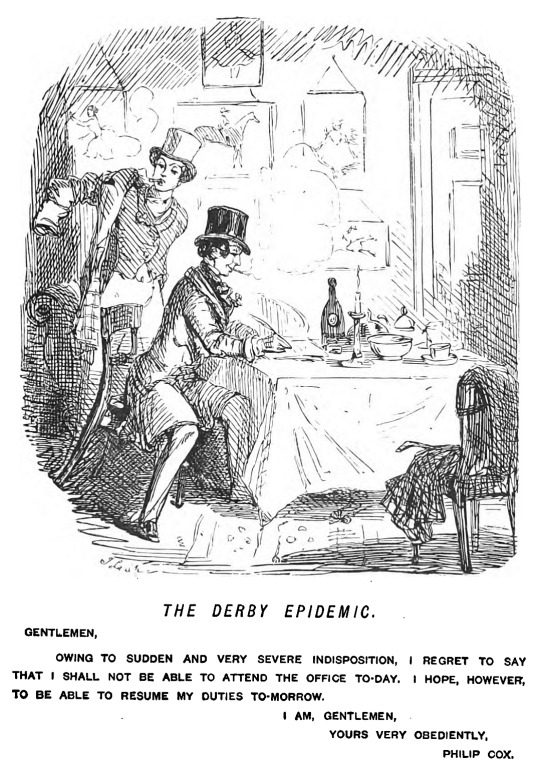
How to call off from work in 1846, by John Leech.
#Eighteen-Forties Friday#1840s#john leech#cartoon#early victorian era#fashion#1846#horse racing#office culture#described#smoking
89 notes
·
View notes
Photo

Dress
1845-1849
John Bright Collection
#dress#fashion history#historical fashion#1840s#victorian#victorian fashion#romantic era#1845#1846#1847#1848#1849#floral#flower print#brown#stripe#john bright collection
737 notes
·
View notes
Text

3 notes
·
View notes
Text
One Law to make
If you had the power to change one law, what would it be and why?
Rather change i would like to make a law which prohibits criminals to participate in election and enter parliament.
As more good people are in parliament they will make necessary laws for benefits the citizens and abandon the cruel laws.
May be I am completely wrong with this idea but I atleast I can choose politician who is…
View On WordPress
#dailyprompt#dailyprompt-1846#hard#honest#Iqra Fashions#noble#politics political views#science#Yuva Home Tutors
0 notes
Photo



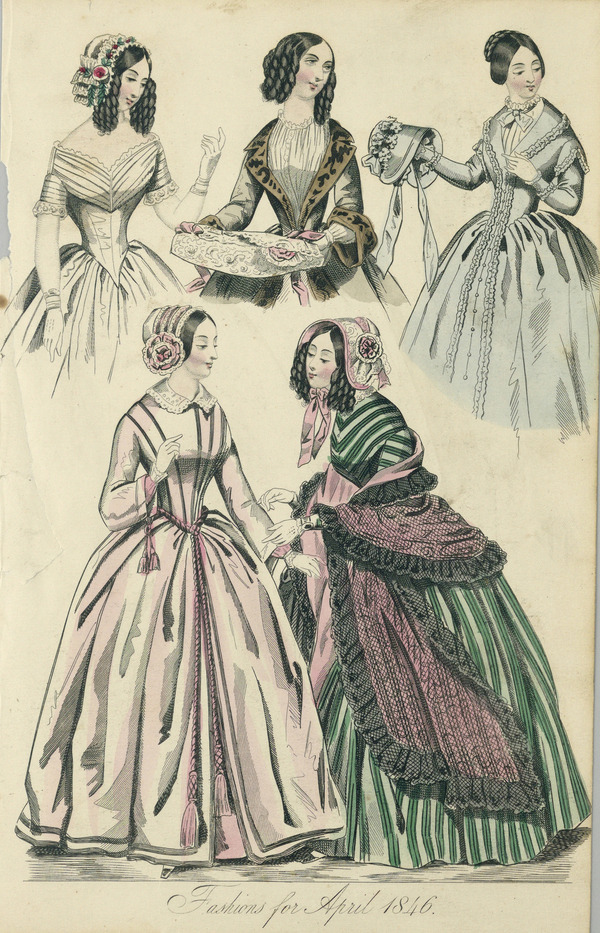
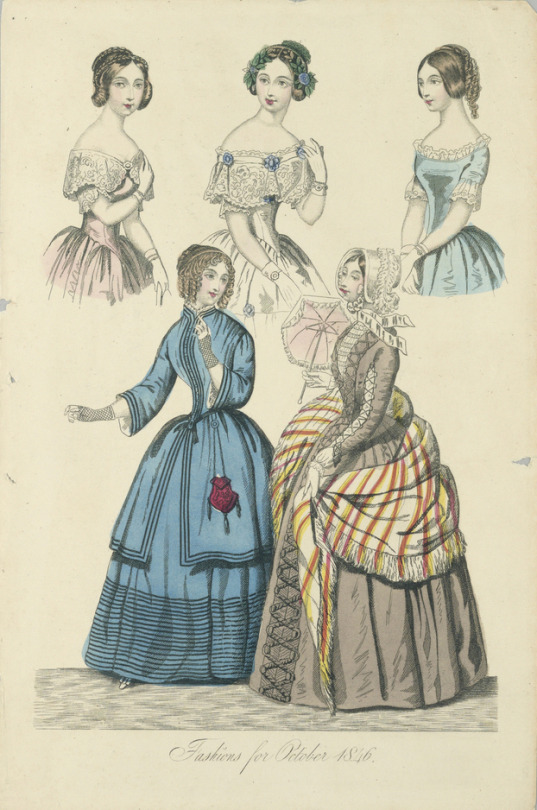

1846 Fashion plates from La Belle Assemblee:
January
March
March
April
October
November
(Cooper Hewitt Smithsonian Design Museum)
447 notes
·
View notes
Note
hello! i’m looking into adopted yet another 19th century man. i’ve owned several others, and am looking for something unique. are there any unique and peculiar breeds you recommend?
Sure! These heritage and unique 19th century men may not be for everyone, but I want them to get more love.
French soldier left behind on the field of battle during the 1870 Franco-Prussian War.
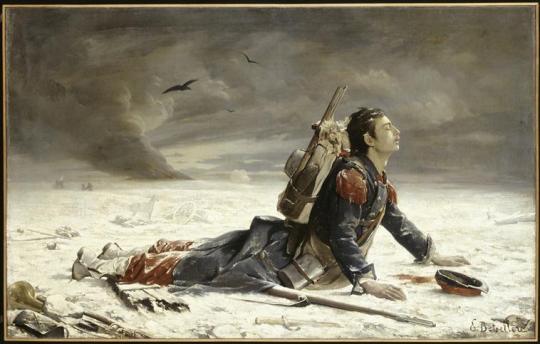
Poor sweetheart!! True story: the model for this 1872 painting, real French soldier Théodore Larran, met the artist Émile Betsellère many times because Betsellère was so touched by his story. Absolutely the type of 19th century man you want to rescue and love.
A jolly flatboatman.
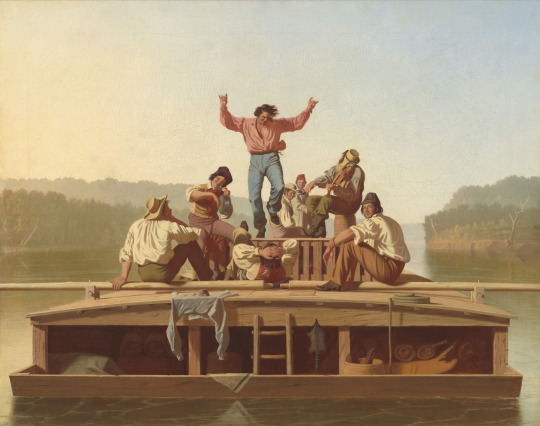
From The Jolly Flatboatmen by artist George Caleb Bingham, 1846.
A good 19th century man doesn't have to be wealthy or formal, as these charming working class fellows attest. Perfect for the aficionado of lively, active 19th century men.
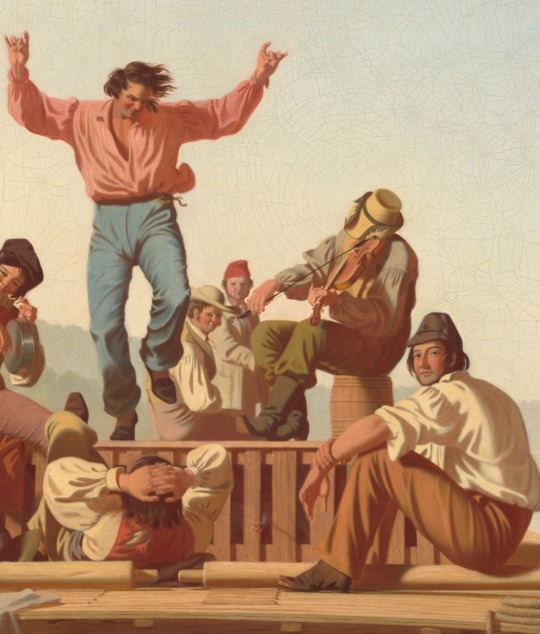
British Army 41st Regiment of Foot Soldier, c. 1800-1815.
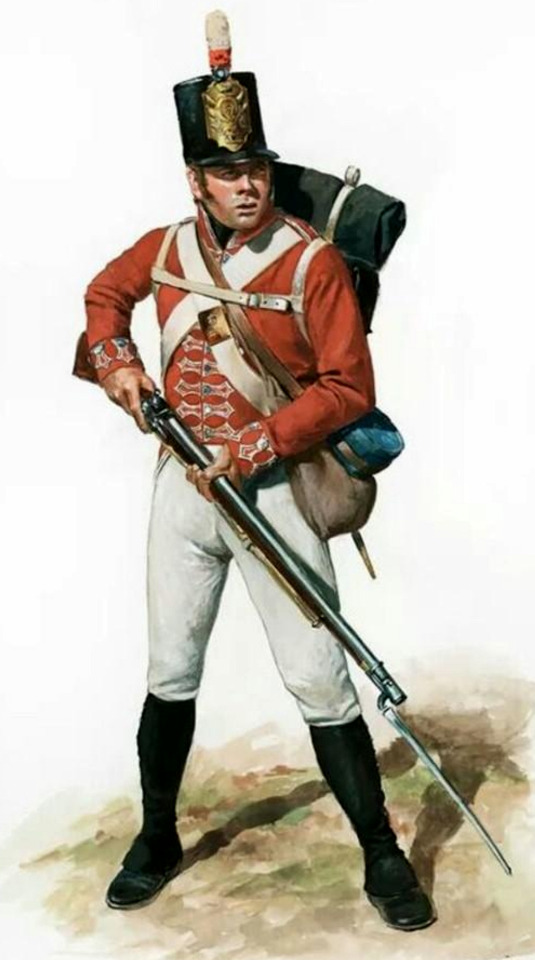
Who doesn't have "a passion for a scarlet coat," as Jonathan Swift phrased it! Your soldier needs a lot of exercise and structure, but he's not picky about his food or bedding. Comes with his own blanket and water bottle! He's a lover, he's a fighter, I recommend delousing him before you bring him into your home.
Cossack Trowsers King.
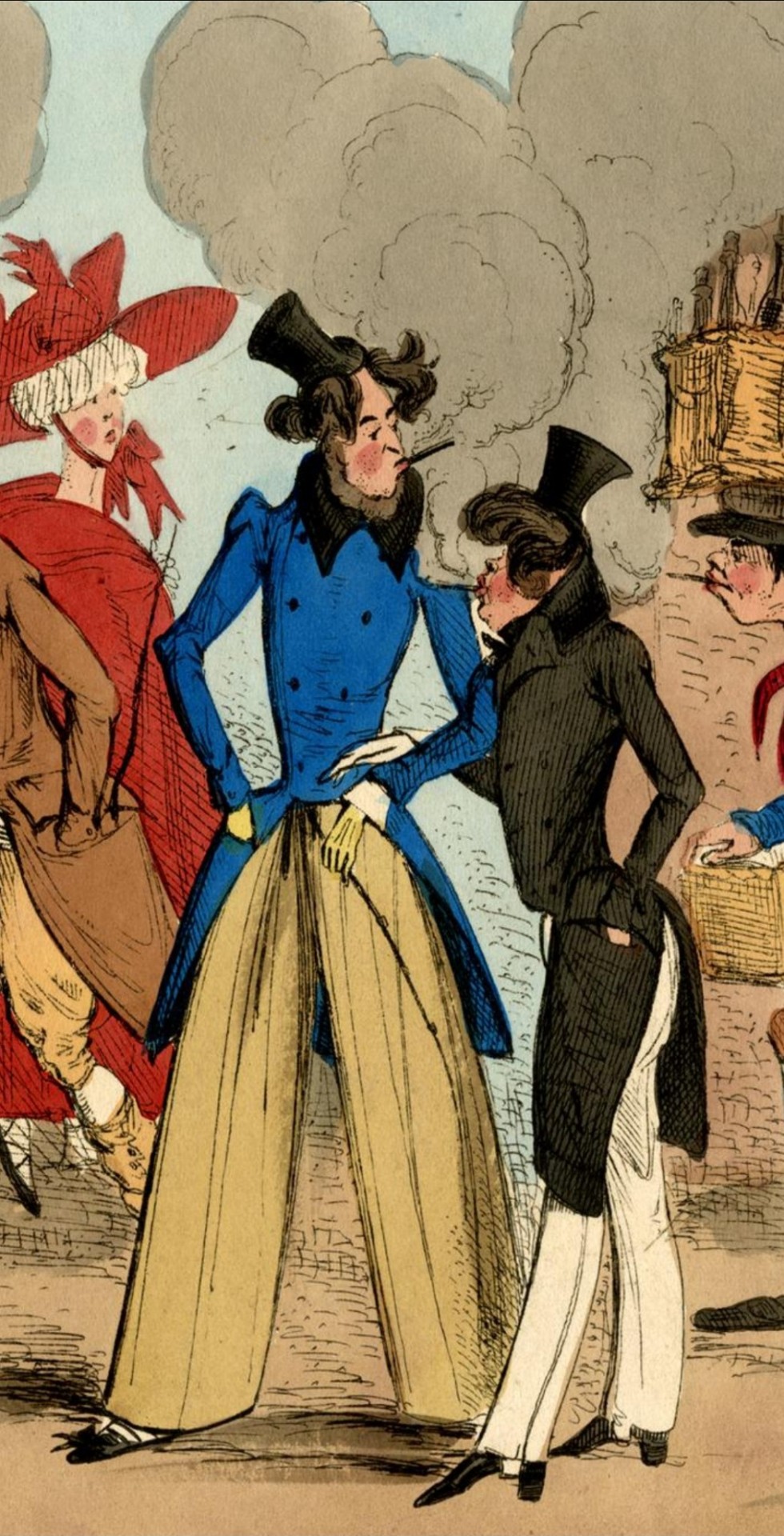
Strutting his stuff in 1827, he has an insouciant attitude and a bold, fashion-forward look. You may want to address the fact that he's also a major source of air pollution.
164 notes
·
View notes
Text

detail of 'the flower girl' by charles cromwell ingham, 1846 in fashion is... - the metropolitan museum of art (2014)
52 notes
·
View notes
Text
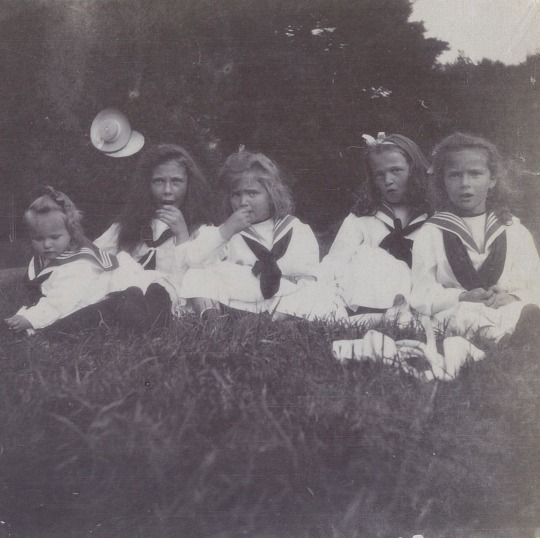
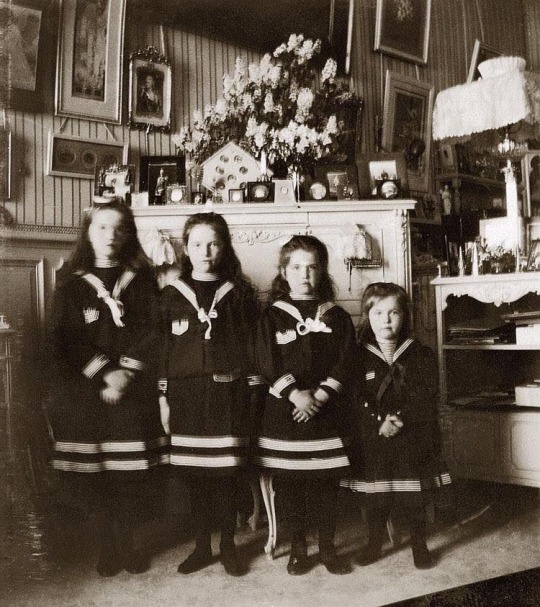

Claudia’s sailor dress and historical references.
While a staple of childhood fashion among royalty and aristocrats for decades (Queen Victoria put her son in one in 1846 and set the trend for wealthy parents), the sailor dress for teenage girls was popularized in America in the 1900s by tailor Peter Thomson of Philadelphia. Louis who keeps up with fashion trends would’ve known immediately what to put his new baby in as this was THE look for little girls in the 1910s. It was eventually accepted as school wear for girls which is ironic since Claudia doesn't go to school or interact with other kids at all at this point. They are now largely associated with schoolgirls and uniforms.

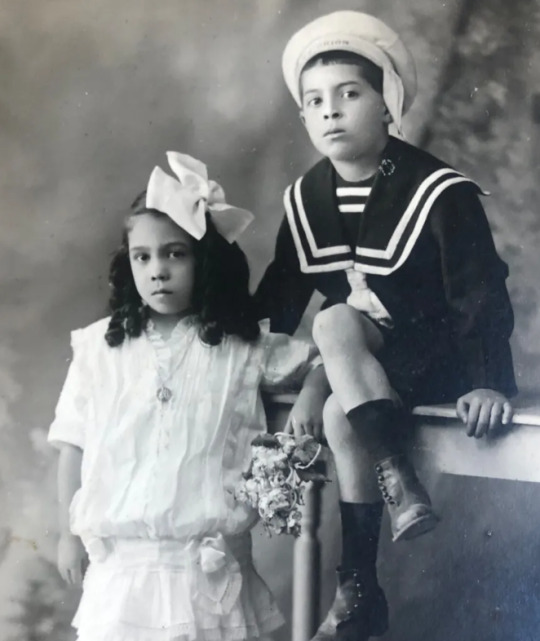
While the majority of these childhood sailor photoshoots available online are of white kids, you can also find some examples of black children dressed in sailor fits from early 20th century so this was not exclusively a white kids only trend, which Louis surely would've been very conscious of.
#iwtv#that second pic is the romanov sisters btw not to be morbid#but maybe intentional given the year claudia was made 1917#👀👀👀#also i think florence def dressed up the kids in these sailor clothes for photoshoots when they were little#costume analysis
173 notes
·
View notes
Text
Suddenly, Letters from Watson dumps us in the middle of the Great American Desert (part 1 of "On the Great Alkali Plain," 2/7/24). This is not anywhere I expected to be transported from London, and the contrast makes the Mountain West feel exotic for a minute.
The Great American Desert -- stretching from about Grand Island, Nebraska to the Sierras and pretty much the entire north-south length of the U.S. -- had become a thing of legend since explorers' accounts in the 1820s. When Dad and I drove across it in 2022, we talked about how incredibly daunting it must have been for emigrants seeking their land of milk and honey on the Pacific coast.
The way we went, out I-80, Nebraska shifts from green to gray as it rises toward the Rockies. After a while, the wind picks up as you go uphill into Wyoming. There's a lot of Wyoming, and after Cheyenne and Laramie (both of which would be small towns in most states), it's very, very empty. When we finally started the descent toward Salt Lake City, and the little valleys beside the road turned green with running water, it was truly like entering paradise.
Of course, in 1847, Salt Lake City was just barely being settled, as Brigham Young led his Latter Day Saints west from Council Bluffs, and its location wasn't part of the U.S. yet.
The Mexican-American war had started the prior year, 1846, and was still going. Spring-summer of 1846 saw the Bear Flag Revolt in California, followed by the U.S. just annexing the state. Gold wouldn't be discovered at Sutter's Mill until 1849, so while emigration to California happened -- the Donner Party made their ill-fated trip in 1846-47 -- it wasn't anything like the scope of movement along the Oregon Trail.
As far as I can tell, "Sierra Blanco" is not a real place. There's a Sierra Blanca in New Mexico -- which would fit with all the specific landscape, plus White Sands National Park in New Mexico specifically has alkali flats. Last time I drove through New Mexico on I-40, in late 2018, it was delightfully desolate, so I can buy that in 1847, it seemed completely empty, with even the native peoples avoiding some stretches.
Why anyone would be crossing New Mexico is a mystery, since neither Arizona nor southern California were much settled by Americans. There was some sort of wagon route across New Mexico used by U.S. soldiers during the Mexican-American War, so if I'd expect anyone to be about, it'd be the U.S. Army.
Utah, now, is downright famous for its salt flat, but that's west of the site of Salt Lake City.
Regardless, parties screwing up their trip to the west by taking an imprudent shortcut or mistaking the route was definitely both a thing that happened and, thanks to the Donner Party, a trope. Our haggard and starving traveler sounds about right.
Then he reveals a Plucky Innocent Victorian Child.
That "pretty little girl of about five years of age" is the absolute ideal of Victorian childhood, being perfectly behaved, utterly imperturbable, determined to see the best in all things, sweet, trusting, and looking forward to being reunited with her mother in heaven.
This kind of child is why Louisa May Alcott was seen as innovative for writing Little Woman about girls who worked on their character flaws. (This is also the ideal the March girls were being aimed at. Polly in An Old-Fashioned Girl comes closer, but even Polly would have been upset about being hopelessly lost in the desert with no water.) Contrast this with the street urchins that Holmes employs in his investigation, who are good enough sorts but scrappy, resourceful, and street smart.
Ordinarily, a Victorian child who was utterly sweet and pious would be a cinnamon roll, literally too good, too pure for this world, and thus would die beautifully but tragically before long. Being lost in the desert seems ideal for this, but --
She turns to prayer, and since someone must survive in order for this scene to be relevant,
Yes, darn it, I am on the edge of my seat to know what happens. I'm also grateful that crossing the Great American Desert in 2022 was a quicker process. I've been reading Carey Williams' old-but-interesting California: The Great Exception, which has a lot to say about how 19th century isolation shaped California's economy and power structure, not always for good. But that's neither here nor there -- I don't think we're headed to California.
21 notes
·
View notes
Text
Two-piece dress, circa 1860-1866. Centraal Museum Utrecht.


This dress was worn about 1860-1865 by her grandmother, lady Cecelia Maria van Pallandt-Steengracht (1813-1899). Lady Pallandt-Steengracht inherited Kasteel Keukenhof from her father, Lord Johan Steengracht van Oostcapelle, the first director of the Mauritshuis in The Hague, in 1846. This dress, in highly fashionable cornflower blue, reflects the status of this distinguished family. Synthetic colours such as this were developed in secret by the Frenchman Jean Baptiste Guimet in 1826 and were commercially produced later in the nineteenth century. The increasingly wide range of colours that dictated the fashion image in the 1860's were not completely without risk, the chemical composition of some dyes made them very bad for the health.
image copyright CMU
101 notes
·
View notes
Photo

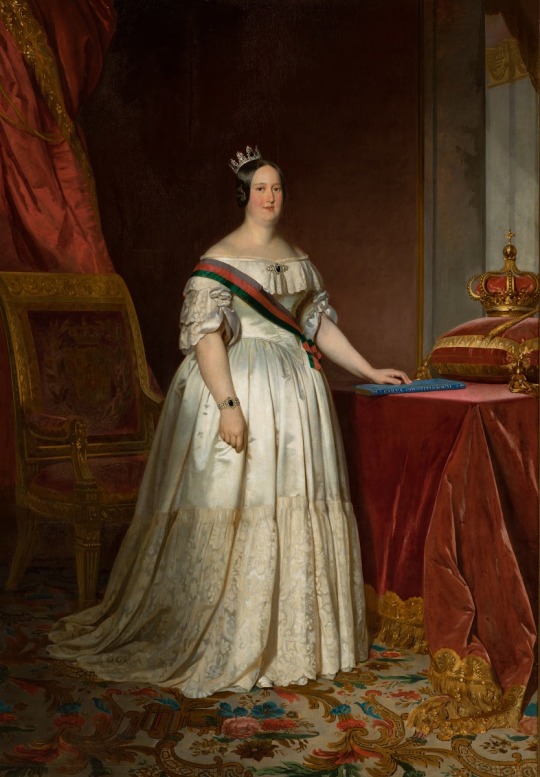




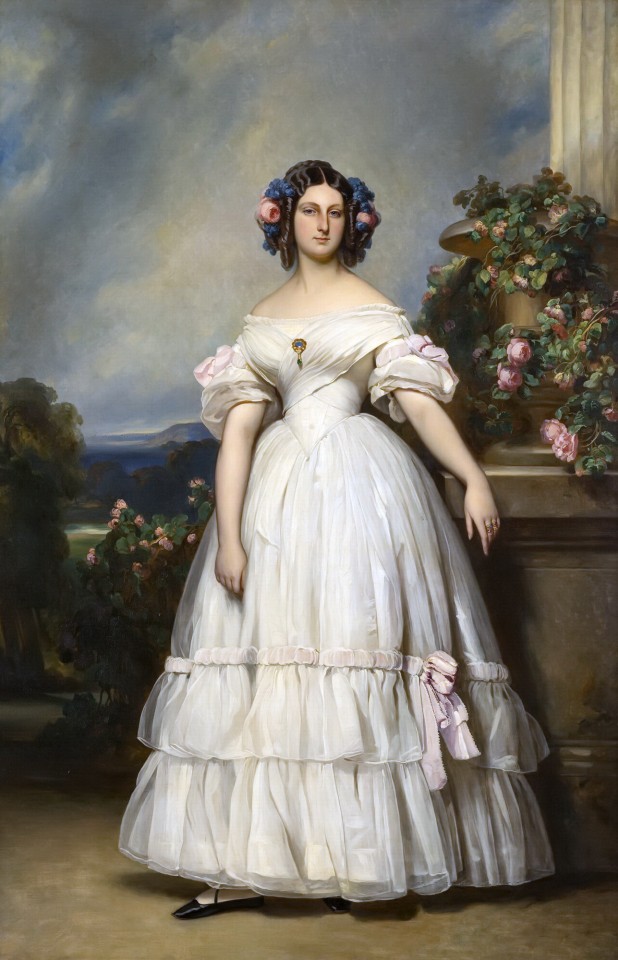



1846 fashion in pictures -
Top: 1846 Queen Victoria at the Age of 27 Years by ? (was for sale by Boris Wilnitsky). Image cropped to remove shadowed areas along the left, top, and right edges. Print, spots, & flaws removed w Pshop 1143X1953 @72 584kj.
Second row left: 1846 Rainha D. Maria II by Ferdinand Krumholz (Palácio da Ajuda - Ajuda parish, Lisboa, Portugal). From Wikimedia 834X1200 @72 325kj.
Second row right: 1846 Maria Nikolaievna by Carl Timoleon von Neff (location ?). From liveinternet.ru/users/lara_rimmer/post458270808/ 1000X1342 @96 369kj.
Third right: 1846 Prinses Marianne van Oranje-Nassau by Jan Philip Koelman (Geschiedkundige Vereniging Oranje-Nassau/Historical Society of Orange-Nassau, Paleis Het Loo - Den Haag, Zuid Holland, Netherlands). From Wikimedia 1508X2000 @96 498kj.
Fourth row left: 1846 Adriana Wilhelmina Clara Hooft by Jan Baptist van der Hulst (Frans Hals Museum - Haarlem, Noord-Holland, Netherlands). From history-of-fashion.tumblr.com/image/136328711994 900X1186 @72 474kj.
Fourth row right: 1846 Lady Fitzharris by Richard James Lane after Edwin Landseer (British Museum). From their Web site 1927X2500 @300 1.1Mj.
Fifth row: 1846 Princess Clementine of Orleans, Princess of Saxe-Coburg-Gotha by Franz Xaver Winterhalter (Châteaux de Versailles et de Trianon - Versailles, Île-de- France, France). From gallerix.ru/storeroom/1941543836/N/2028134133/ 1287X1998 @72 607kj.
Sixth row left: 1846 Augustine-Modeste-Hortense Reiset by Jean Auguste Dominique Ingres (Fogg Museum, Harvard University - Cambridge, Massachusetts, USA). From Wikimedia 1855X2295 @95.19 912kj.
Sixth row right: 1846 María Francisca de la Gándara, Dowager Countess of Calderón by Vicente López y Portaña (Prado). From their Web site ©Museo Nacional del Prado 1475X1920 @96 876kj.
Seventh row: 1846 Augusta Großherzogin von Mecklenburg-Strelitz (1822-1916, née Princess of Cambridge) by Franz Xaver Winterhalter (Royal Collevtion). From Wikimedia 2480X2933 @150 1.1Mj.
#1846 fashion#early Victorian fashion#Biedermeier fashion#Louis-Philippe fashion#Queen Victoria#poke bonnet#Maria II of Portugal#Ferdinand Krumholz#V waistline#Maria Nikolaievna#Carl Timoleon von Neff#lace head scarf#Marianne of the Netherlands#Jan Philip Koelman#high neckline#Adriana Wilhelmina Clara Hooft#Jan Baptist van der Hulst#pleated bertha#Lady Fitzharris#Richard James Lane#Edwin Landseer#Clementine of Orleans#Franz Xaver Winterhalter#Clementine d'Orléans#Augustine-Modeste-Hortense Reiset.#Jean Auguste Dominique Ingres#María Francisca de la Gándara#Vicente López y Portaña#Augusta von Mecklenburg-Strelitz
132 notes
·
View notes
Text

Paul Gavarni, "Le parfait créancier" series no. 4 (detail), 1846.
#1840s#paul gavarni#1846#fashion#historical men's fashion#art#Eighteen-Forties Friday#early victorian era#gavarni stay winning
81 notes
·
View notes
Photo

Up Close: Dress,1845-1849 (John Bright Collection)
#dress#up close#fashion history#historical fashion#1840s#victorian#victorian fashion#romantic era#1845#1846#1847#1848#1849#floral#flower print#brown#stripe#john bright collection
323 notes
·
View notes
Text

2 notes
·
View notes
Text
Thomas John Chew the fashion victim of USS Constitution and USS Chesapeake

Portrait of Thomas John Chew, by unknown c. 1820 (x)
Thomas John Chew sailed as purser on the USS Constitution from 1 June 1812 to 26 September 1812. He was on board when the ship captured HMS Guerriere on 19 August 1812 and was awarded a Congressional Silver Medal for his actions and service and shared with the crew $50,000 in prize money. After acting as purser of the Boston Navy Yard for a time, he transferred to USS Chesapeake. He was on board that vessel during the battle against the HMS Shannon on June 1, 1813. According to some accounts, Chew supported the mortally wounded Captain James Lawrence as he uttered his famous last command: "Don't give up the ship." Chew was taken to Halifax, Nova Scotia as a Prisoner of War after the battle, but was quickly exchanged. We went on to serve as purser on board several other US Navy ships as well as for the New York Navy Yard. He resigned from the Navy on March 12, 1821. He died in 1846.

Chew’s shirt, 19th century (x)
The purser was the ship's commercial agent, purser, grocer and storekeeper all in one. His duties, which required a high degree of organisation and business acumen, included keeping the ship's pay and muster rolls and paying the officers and crews.

His trousers, 19th century (x)
He was responsible for procuring and issuing provisions to the crew. In addition, the purser ran a ship's shop where the men could buy clothing, hygiene articles, utensils, knives, ribbons, needles, thread, mustard, chocolate, coffee, tea, sugar and tobacco. In order to keep track of everything, the purser had to keep detailed accounts in accordance with naval regulations. During a battle, the purser was stationed in the cockpit to help the surgeon dress the wounded. He received $40.00 per month and two rations per day.

The red suspenders, 19th century (x)
But it was not only the pay of the purser that was enticing, but also the opportunity to make large profits by selling clothing and supplies to the crew at sea. Since there was no competition and the 450 men and boys aboard a frigate represented a steady market, there was room for extraordinary profits.
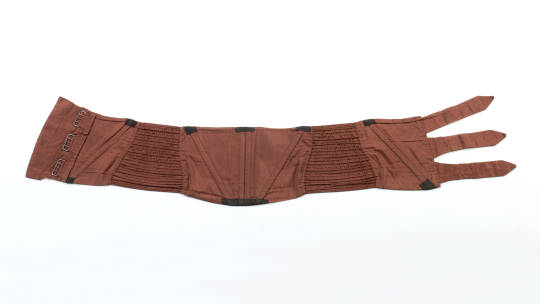
His stays, c. 1810-1820 (x)
Because he earned so well, he could of course dress in the latest and best fashions from Europe. Underneath he wore the finest trousers, red suspenders and shirts and even a man's corset or stay. Men's stays were also used in the army, for hunting, and for strenuous exercise. In the opinion of the fashion magazine of the time, this gave him an aristocratic look, and that was what he was after. Even though he continued to serve in the Navy, he was still a wealthy gentleman and he wanted to show that through his appearance.
#naval history#us navy#purser#thomas john chew#uss constitution#uss chesapeake#war of 1812#clothing#age of sail
59 notes
·
View notes